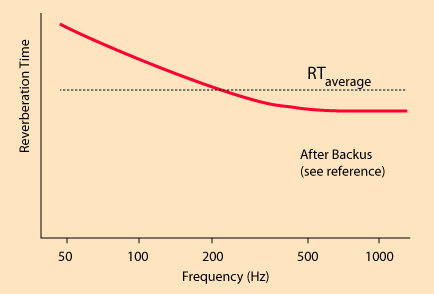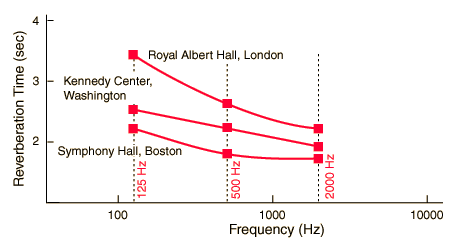Longer Reverberation Time for Lows
The graph shows a progression to higher reverberation times for low frequencies. It is typical for the reverberation time for low frequencies for a good auditorium to be some 30% higher than the overall average reverberation time. This characteristic helps to deal with the bass loss problem, one of the fundamental problems of auditorium acoustics.

| Further discussion | Auditorium examples |
Auditorium acoustics
Reference
Backus
Ch 9
| HyperPhysics***** Sound | R Nave |
